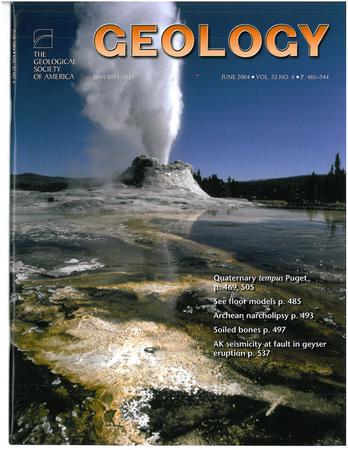在渐进性俯冲过程中,流体介导的变形导致了变弱、强化和块状基质结构
IF 4.6
1区 地球科学
Q1 GEOLOGY
引用次数: 0
摘要
msamrange(或块状基质结构)对俯冲巨型逆冲构造的力学和化学演化具有一级控制作用。然而,形成msamange的时间和机制是可变的和有争议的。对美国加利福尼亚州圣卡塔利娜岛卡塔利娜片岩的蓝片岩单元中的一段变质沉积msamuange的野外观测和(微观)结构分析表明,同俯冲变形和流体介质作用导致了板块界面处msamuange的形成。沉积为浊积岩,早期剪切平行于层理面发生(S1片理)。在接近俯冲高峰的条件下,在俯冲发震带底部(~ 1.0 GPa, 320°C),岩石在横卧开-紧褶皱(F2)和轴向平面解理(S2)中发生强烈变形。在褶皱鼻中,压裂、流体流动和石英沉淀以伸展脉网的形式保存。持续的剪切导致这些增强的鼻状体断裂,并在由高应变褶皱肢组成的较弱的少脉基质中转变为强块(S1−2)。显微组织显示,细晶石英±钠长石的压溶蠕变导致高应变褶皱分支发生粘性变形。相比之下,褶皱鼻状和/或块体含有粗粒石英脉,几乎没有变形的证据。这些岩石通过变形和矿物沉淀的相互作用,记录了同俯冲块体-基质-本文章由计算机程序翻译,如有差异,请以英文原文为准。
Fluid-mediated deformation leads to weakening, strengthening, and block-in-matrix structures during prograde subduction mélange formation
Mélange (or block-in-matrix structures) exerts a first-order control on both the mechanical and chemical evolution of subduction megathrusts. However, the timing and mechanisms that form mélanges are variable and debated. Field observations and (micro-) structural analyses from a metasedimentary mélange in the lawsonite blueschist unit of the Catalina Schist (Santa Catalina Island, California, USA) reveal that syn-subduction deformation and fluid-mediated processes led to mélange formation at the plate interface. Deposited as turbidites, early shear occurred parallel to bedding planes (S1 foliation). At near peak subduction conditions, at the base of the subduction seismogenic zone (∼1.0 GPa, 320 °C), the rocks were intensely deformed in recumbent open to tight folds (F2) with axial planar cleavages (S2). Fracturing, fluid flow, and quartz precipitation are preserved as extensional vein mesh networks in fold noses. Continued shearing led to boudinage of these strengthened noses and transformation into strong blocks within the weaker less-veined matrix composed of high-strain fold limbs (S1−2). Microstructures reveal viscous deformation in the high-strain fold limbs occurred by pressure-solution creep of fine-grained quartz ± albite. In contrast, the fold noses and/or blocks contain coarse-grained quartz veins with little evidence of deformation. These rocks record the development of syn-subduction block-in-matrix mélange structures through the interaction of deformation and mineral precipitation; pressure solution weakened fold limbs-turned-matrix and veining strengthened fold noses-turned-blocks. Although mélange structure is often invoked to explain tremor and slow slip, rheological analysis indicates that these metasedimentary rocks can host tectonic creeping but cannot accommodate slow-slip strain rates by the deformation mechanisms preserved in their microstructures.
求助全文
通过发布文献求助,成功后即可免费获取论文全文。
去求助
来源期刊

Geology
地学-地质学
CiteScore
10.00
自引率
3.40%
发文量
228
审稿时长
6.2 months
期刊介绍:
Published since 1973, Geology features rapid publication of about 23 refereed short (four-page) papers each month. Articles cover all earth-science disciplines and include new investigations and provocative topics. Professional geologists and university-level students in the earth sciences use this widely read journal to keep up with scientific research trends. The online forum section facilitates author-reader dialog. Includes color and occasional large-format illustrations on oversized loose inserts.
 求助内容:
求助内容: 应助结果提醒方式:
应助结果提醒方式:


